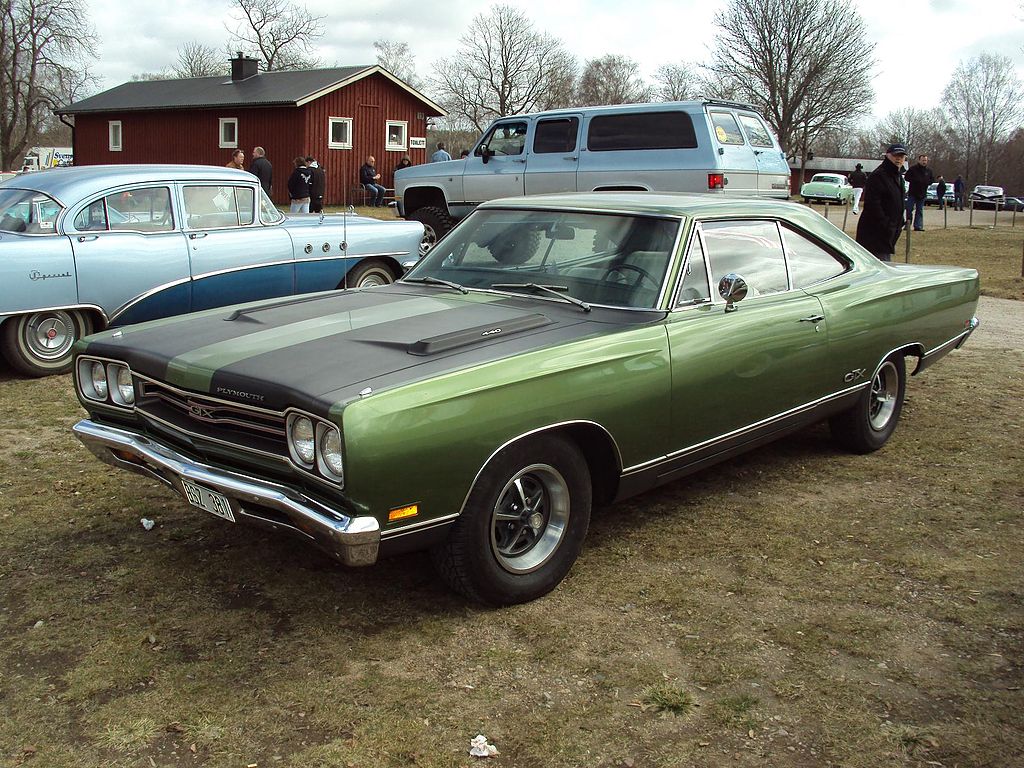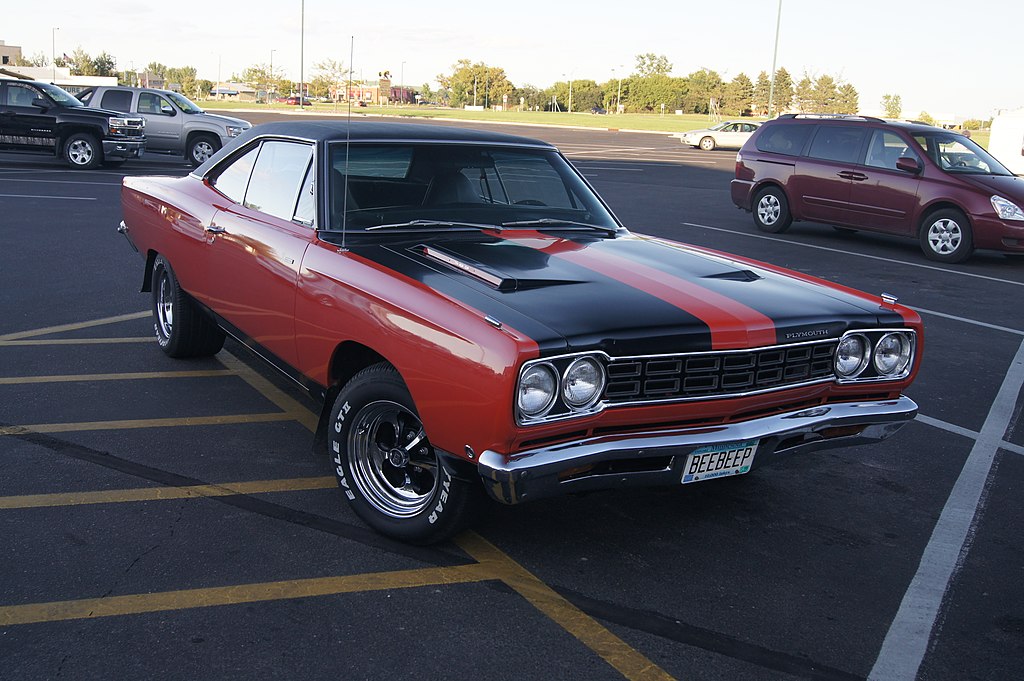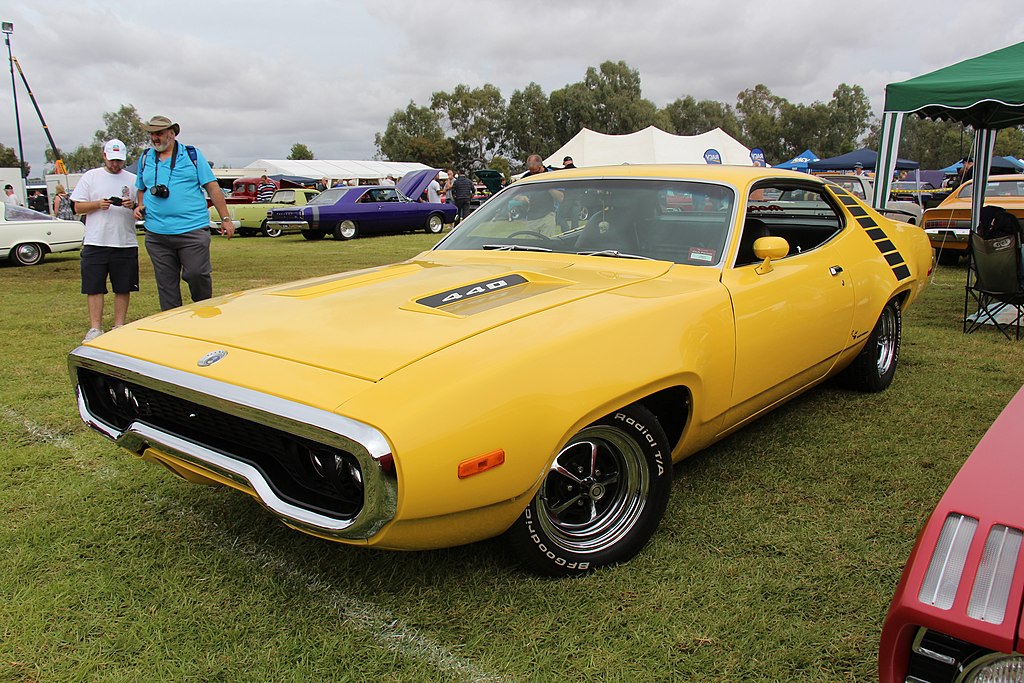Plymouth GTX and Road Runner: Performance with either luxury or no-frills
Posted by Dale Edward Johnson on Nov 8th 2022
As the muscle car wars heated up in the latter half of the 1960s, Plymouth’s offering was the GTX. The concept (followed by many chasing the innovative Pontiac GTO) was simply put a big engine in a mid-size body and add some sporty trim.
The Plymouth GTX started as a mid-sized Plymouth Belvedere, which was common as a taxi cab and grocery getter.

nakhon100, CC BY 2.0, via Wikimedia Commons
The GTX, introduced for the 1967 model year, included the trim of the high-end Satellite, and added such goodies as hood scoops, red-line tires, stripes – and a 440 cubic inch engine as standard equipment. This engine was used in two-ton Chryslers and Imperials – and when tuned for the much smaller and lighter GTX, it produced an additional 25 horsepower, for a total of 375 hp. The optional engine was the legendary 426 Hemi that turned out 425 hp. Other upgrades included beefed-up suspension, heavy-duty brakes, seat belts, a padded dashboard, a blacked out grill, dummy hood scoops, a chrome quick-release gas filler cap on the rear driver’s side, and simulated mag wheel covers.
For 1968, the Belvedere series, including the hot GTX, got an all-new body. There was also an all-new model called the Road Runner – the first “budget” muscle car. It combined the trim level found in a base Belvedere – including rubber floor mats and dog dish hubcaps – with high performance: a standard engine of 383 cubic inches with a four-barrel carb, along with a four-speed manual transmission. Two models were offered: a two-door coupe and a two-door hardtop. The Road Runner used graphics from the Warner Brothers cartoon, and even had a horn that mimicked the “beep-beep” sound made famous in the cartoon series. By dropping the luxury touches found on the GTX, the Road Runner offered a low-priced way to get into a high-performance car. The Road Runner started at $2,870, while the GTX started at $3,329. Buyers favoured the the lower-priced version, with 44,599 Road Runners being sold, almost triple the 17,940 GTXs. The Road Runner won Motor Trend magazine’s Car of the Year Award.

Greg Gjerdingen from Willmar, USA, CC BY 2.0
For the 1969 model year, a convertible was added to the Road Runner line-up. Sales continued to increase, with 84,420 sold. As for the GTX, sales slumped slightly to 15,602.
For 1970, the Belvedere series sported new taillights and a redesigned front end. As well as the standard 440 and optional 426 Hemi, there was an additional engine option: a 440 cid V-8 with three two-barrel carburetors, good for 390 hp. Sales for both the GTX and the Road Runner were cut in about half; there were 7,748 GTXs and 41,484 Road Runners sold. As well, there was a limited run of 1,920 Road Runner Superbirds produced. The Superbird, designed to qualify for NASCAR stock car racing, had an extended nose section and the huge rear spoiler, similar to the Dodge Daytona Charger, and a standard 440 cid engine. With a price tag of $4,298 the Superbird was the most expensive Plymouth.
An entirely new body style was introduced for the 1971 model year, but sales of both the Road Runner and GTX continued to slide, as higher insurance rates were slowing the sales of muscle cars. It was the final year for the GTX.

Sicnag, CC BY 2.0
For 1973, the base engine in the Road Runner was trimmed back to a 318 cid V-8, and the Road Runner was becoming largely a trim package. Starting for the 1976 model year, the Road Runner name was used on a trim package on the new compact Plymouth Volaré. For 1979, the base engine in the Road Runner was the 225 cid Slant Six engine. The final year for the Road Runner name was 1980.
These days, the GTX and Road Runner names mean magic to muscle car fans – especially the highest-performance versions from 1968 to 1970.
